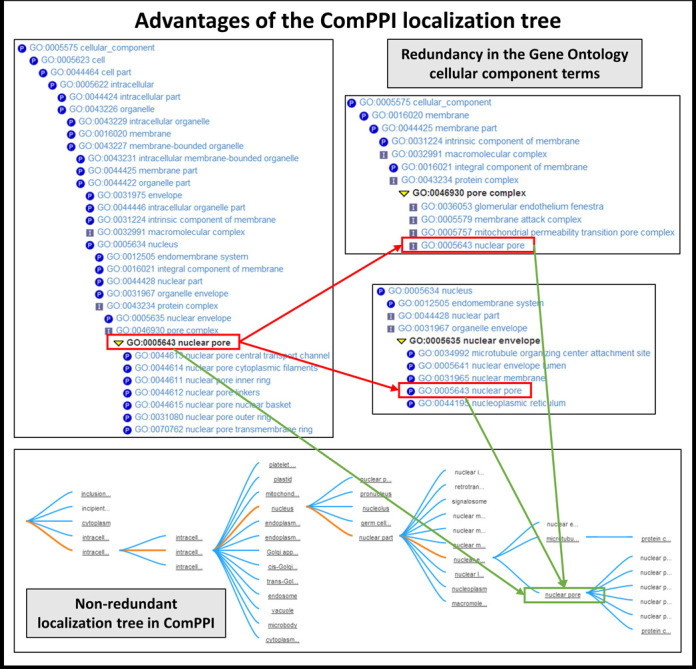Figure 3.

Advantages of ComPPI subcellular localization structure. The subcellular localization structure of ComPPI is based on a manually curated, non-redundant subcellular localization tree extracted from GO data (19) containing more than 1600 GO cellular component terms (Supplementary Figure S2). On Figure 3 an example of the redundancy in the GO cellular component tree structure is shown, where the ‘nuclear pore’ cellular component can be found under several branches in the tree, such as in the ‘nucleus’ -> ‘nuclear envelope’ -> ‘nuclear pore’ or the ‘membrane’ -> ‘membrane part’ -> ‘intrinsic component of the membrane’ -> ‘integral component of the membrane’ -> ‘pore complex’ pathways (highlighted in red). Because of the need of the mapping of high-resolution subcellular localization data into major cellular components (Supplementary Table S4) a localization tree with a non-redundant structure was built. In our example, it can be seen that with the help of this structure the ‘nuclear pore’ derives unequivocally from the ‘nuclear envelope’ term (highlighted in green).
